| Entebbe Airport 2 |
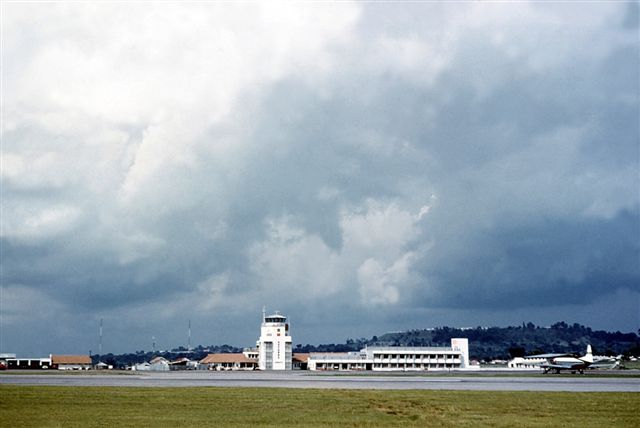 |
| A typical afternoon scene as thunder clouds gather over Entebbe Airport in the late 1950s. The aircraft is a Vickers Viscount of Airwork which later merged with Hunting Clan to become British United - PHOTO Daphne Seager |
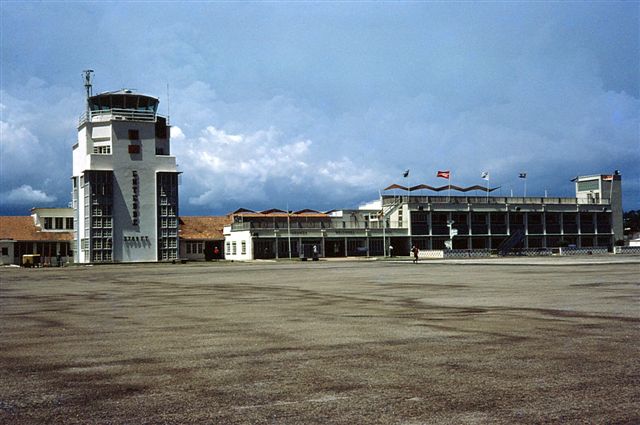 |
| Deserted terminal buildings and tower - PHOTO Daphne Seager |
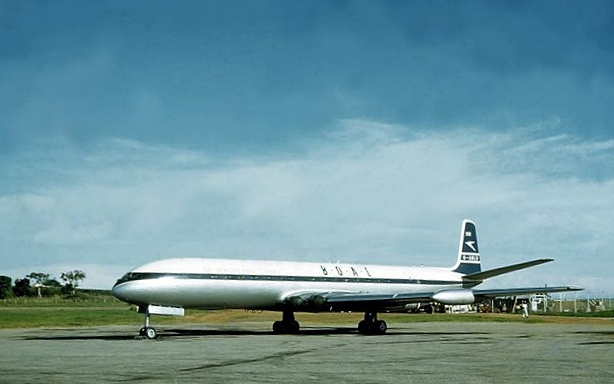 |
| De Havilland Comet 3 G-ANLO. Intended as a development of the unsuccessful Comets 1 and 2, the Comet 3 was a virtual prototype for the Comet 4. Entebbe was associated with the Comet from its inception and was indeed the over-riding raison d'Ítre for the airport - Nairobi being deemed too hot and high. But when the Comet 4 was eventually introduced between London and Johannesburg, Embakasi had been built and BOAC Comets did not make scheduled stops at Entebbe - PHOTO Daphne Seager |
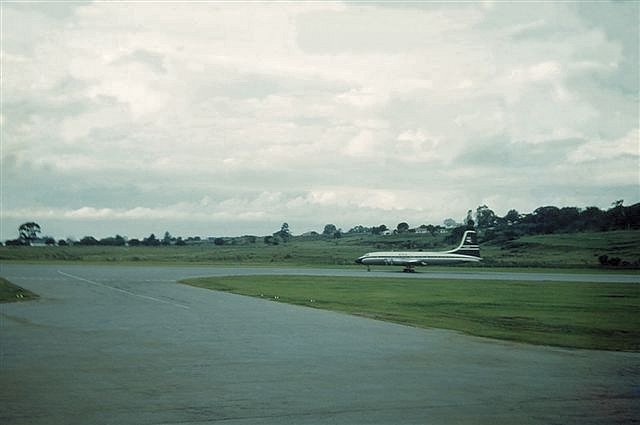 |
| Early morning and the London flight, BA 161 has just landed on Runway 12 . After an hour or so it will depart for Nairobi and return around 2130 as BA 162 bound for London via Khartoum, Rome (Ciampino until December 1960 and Fiumicino from January 1961). PHOTO Daphne Seager |
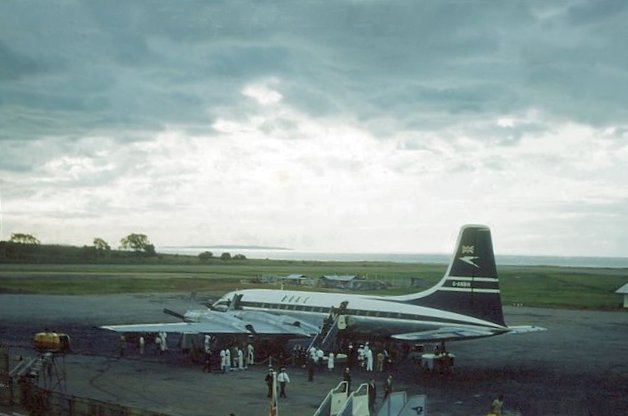 |
| Passengers disembark from Britannia 102 G-ANBN. In 1959 BOAC briefly operated Britannia 312s to East Africa. PHOTO Daphne Seager |
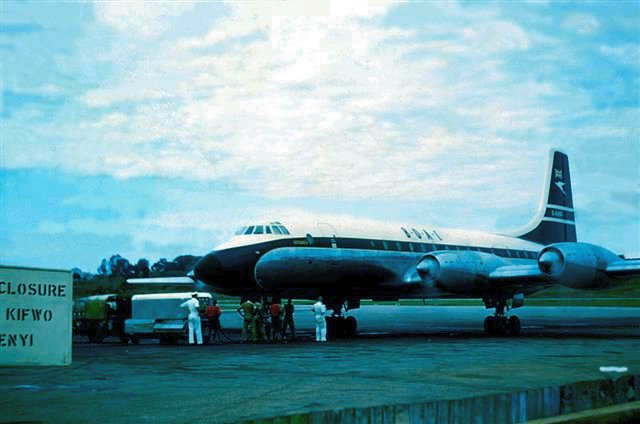 |
| An hour later and Jet Speedbird 161 prepares to taxi. It will enter and backtrack down runway 12 before taking off out over the Lake. Both Comets and Britannias used the "jet" prefix before the standard BOAC Speedbird callsign. PHOTO Daphne Seager |
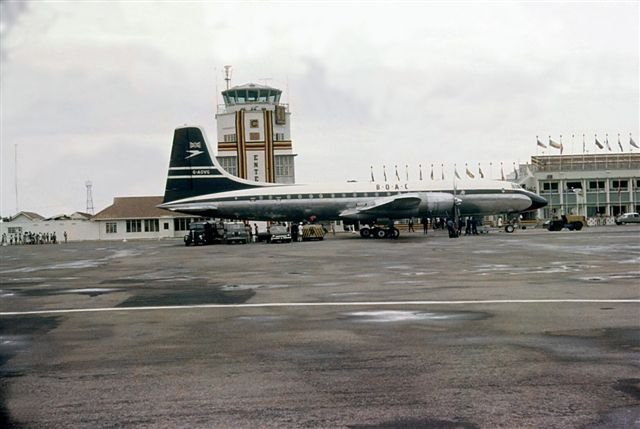 |
| Representing the Queen the Duke and Duchess of Kent arrive at Entebbe for the Independence Celebrations aboard Britannia 312 G-AOVG. The normal BOAC service at this time was operated by Britannia 102s as shown above - PHOTO Daphne Seager |
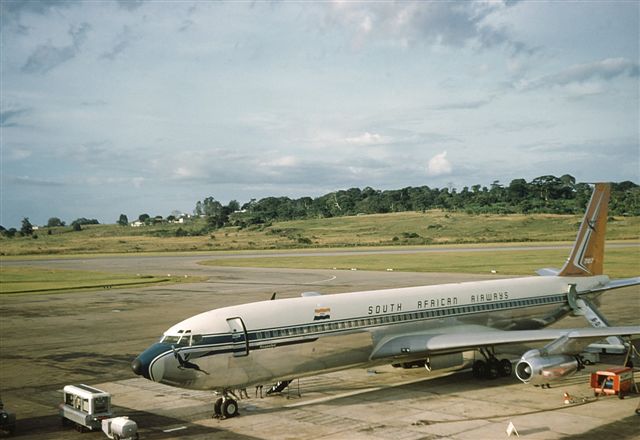 |
| South African Airways Boeing 707 which possibly had diverted from Nairobi. One of these aircraft came off Runway 06 at Nairobi Embakasi in November 1960 only weeks after the type had been introduced between London and Johannesburg. No one was injured and the aircraft was repaired and put back into service - PHOTO Daphne Seager |
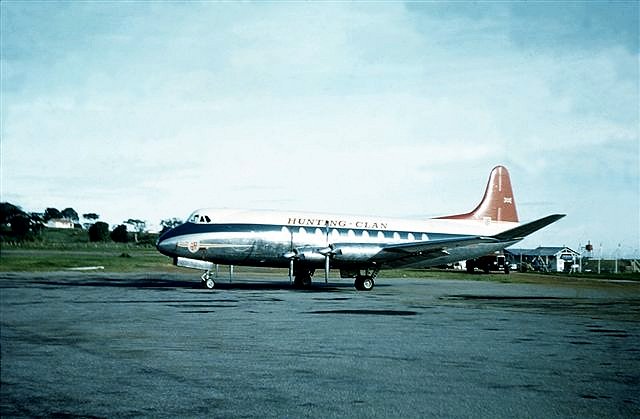 |
| Vickers Viscount 700 of Hunting Clan. These aircraft were later replaced with Viscount 800s fitted with external wing tanks to increase their range. They called three times a week en route to Nairobi but had no traffic rights - unlike BOAC which could pick up and set down between Entebbe and Nairobi. PHOTO Daphne Seager |
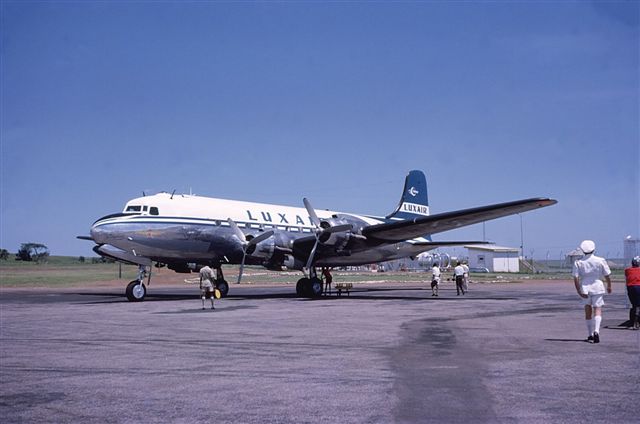 |
| Like Trek, Luxair operated Douglas DC4 charter flights through Entebbe. PHOTO Daphne Seager |
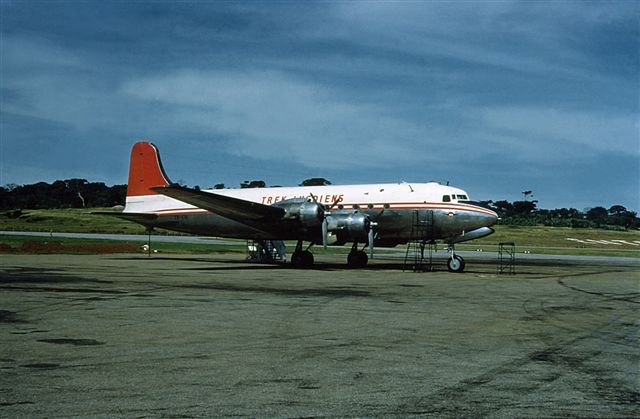 |
| A Trek Lugiens DC4 appears to have problems during a stop at Entebbe - note the engine servicing gantry and the tail bumper support - PHOTO Daphne Seager |
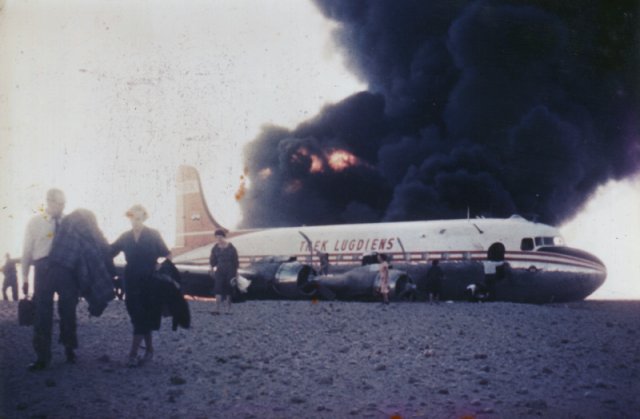 |
| Problems after a stop at Cairo, 3 September 1960. The sad end of one of the pair of Trek Lugien's DC4s - ZS-CIG with Captain Meredith in command ex-Cairo intended Entebbe (direct). The aircraft crash landed near the River Nile shortly after taking off from Cairo - see full report at www.trekairways.co.za/Trek_Airways_DC-4.htm PHOTO Piet Retief |
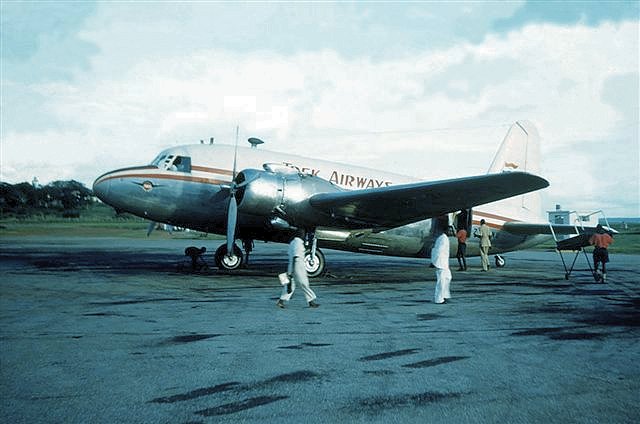 |
| Before acquiring its DC4s, TREK operated Vickers Vikings. Although the DC4 was bigger it was nonetheless unpressurised and passengers still flew at a maximum height of 10 000 feet. PHOTO Daphne Seager |
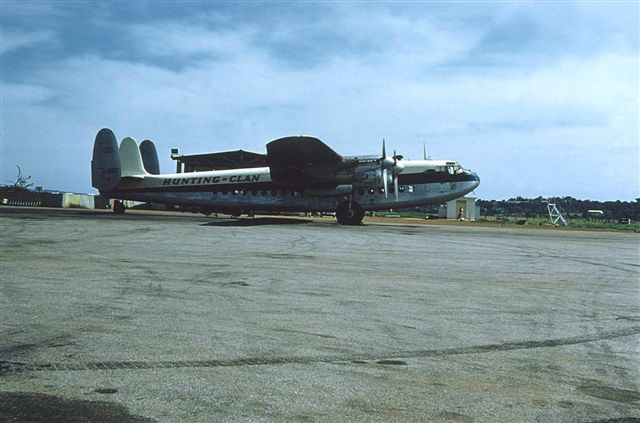 |
| Avro Yorks were frequent visitors to Entebbe often ferrying Proteus engines for the notoriously unreliable BOAC Bristol Britannias. Yet a few years later when British United replaced its Viscounts on the East African route with Britannia 313s the type proved remarkably successful - PHOTO Daphne Seager |
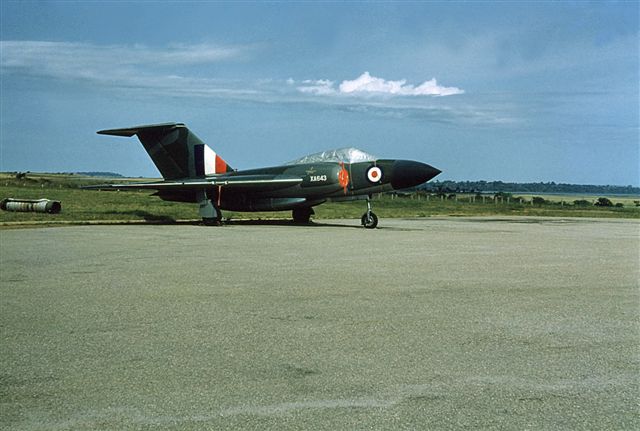 |
| UK Air Force Gloucester Javelin. The RAF was an infrequent visitor to Entebbe although its jet aircraft were a common sight at Nairobi Embakasi as they were unable to operate from RAF Eastleigh in Nairobi - PHOTO Daphne Seager |
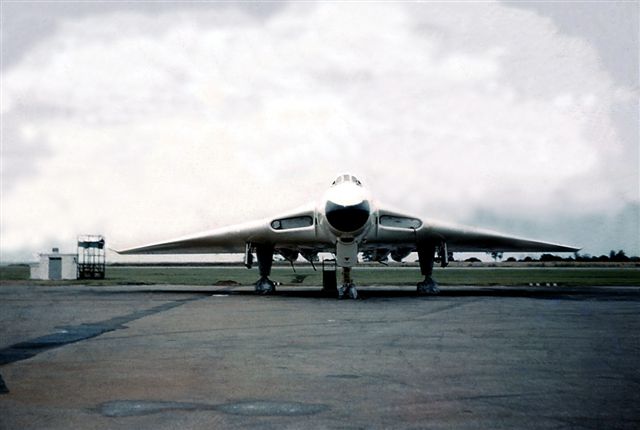 |
| UK Air Force Avro Vulcan. The RAF had plans to operate these aircraft out of both Entebbe and Nairobi in the event of war - PHOTO Daphne Seager |
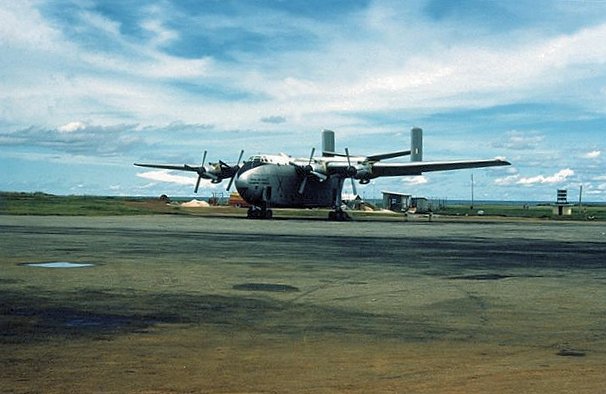 |
| UK Air Force Blackburn Beverley. PHOTO Daphne Seager |
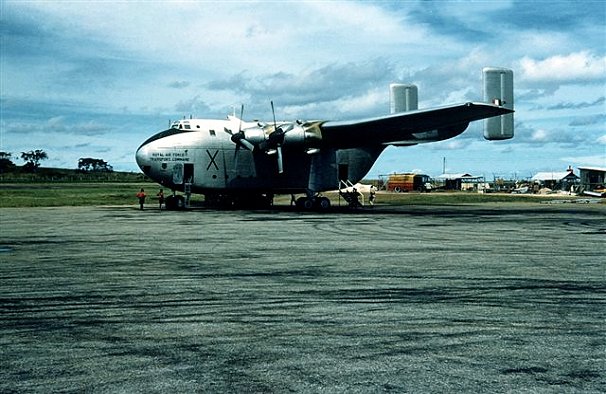 |
| The Blackburn Beverley was frequently seen at Nairobi, but the RAF was a relatively infrequent visitor to Entebbe. PHOTO Daphne Seager |
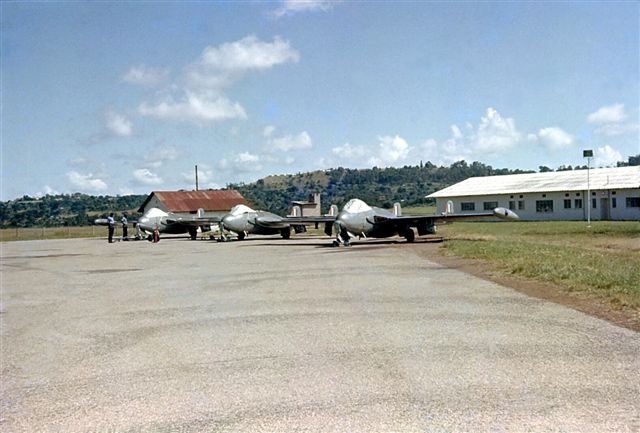 |
| UK Air Force de Havilland Venoms probably overstaying the weekend having flown over from Nairobi or Aden. PHOTO Daphne Seager |
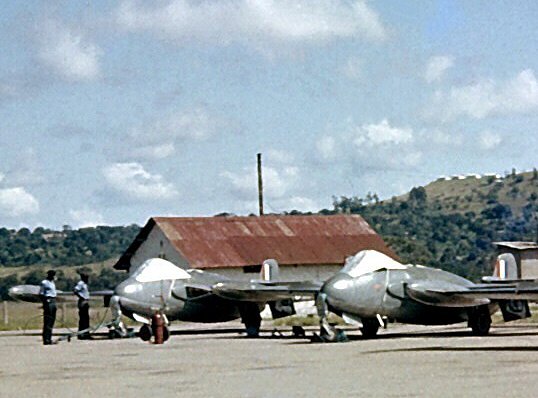 |
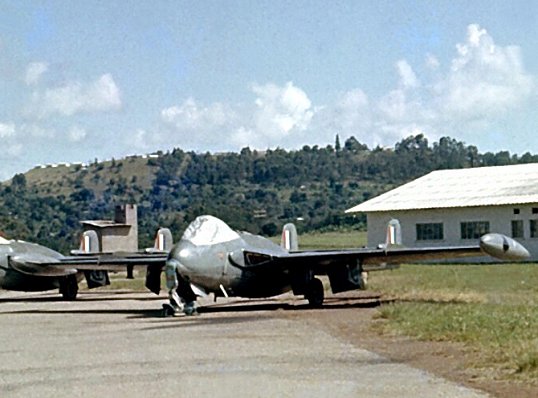 |
| The de Havilland Venom was a development of the earlier Vampire. It was a very small aeroplane as can be seen from the top photograph which shows Entebbe Airport firemen alongside the aircraft. Note the firemen's uniform which was based on the UK Navy's Number 8 Action Working Dress. PHOTOs Daphne Seager |
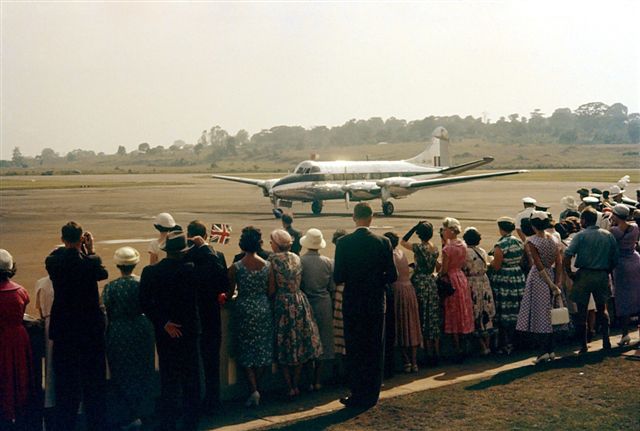 |
| The Queen Mother arrives at Entebbe in a de Havilland Heron 2 in February 1959. She had been due to make the official opening of Nairobi's Embakasi Airport the previous year on her way back to London from Australia. However she was unable to do so when her schedule was severely disrupted due to her QANTAS Super Constellation developing engine trouble and to save time she overflew Nairobi and landed at Entebbe where she briefly visited Government House. She then flew on non-stop to London, promising to return to East Africa in 1959 when she toured Kenya and Uganda. PHOTO Daphne Seager |
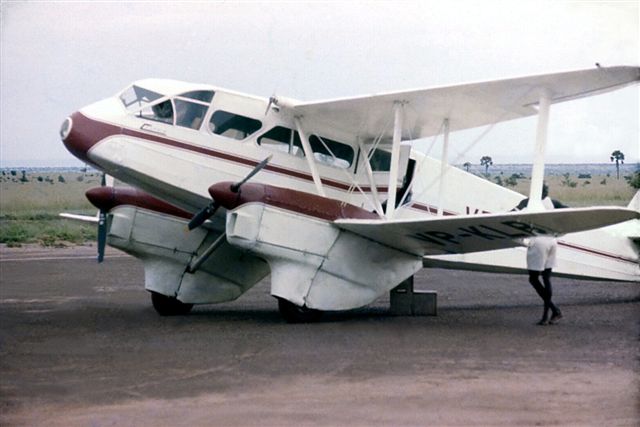 |
| Caspair's DH Dragon Rapide which was used for charter flights within Uganda. PHOTO Daphne Seager |
 |
| Some houses had a marvellous view of the airport. Here a BOAC Argonaut is on the apron during the re-construction of the terminal buildings and tower in the late 1950s. PHOTO - Daphne Seager |
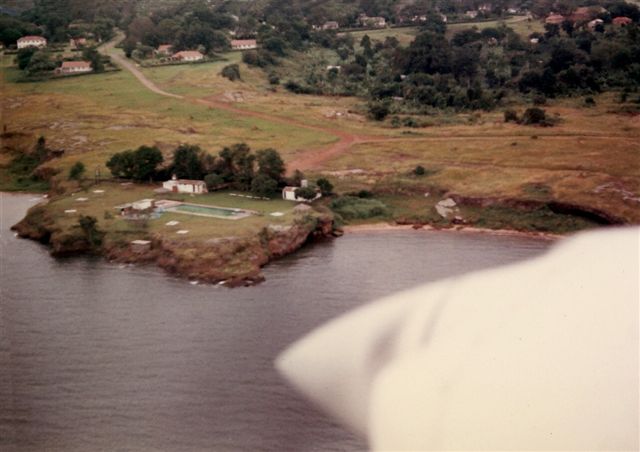 |
| A Piper Aztec flies over Entebbe Swimming Pool on Finals for Runway 30 - PHOTO Daphne Seager |